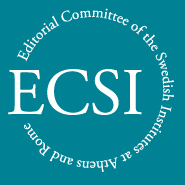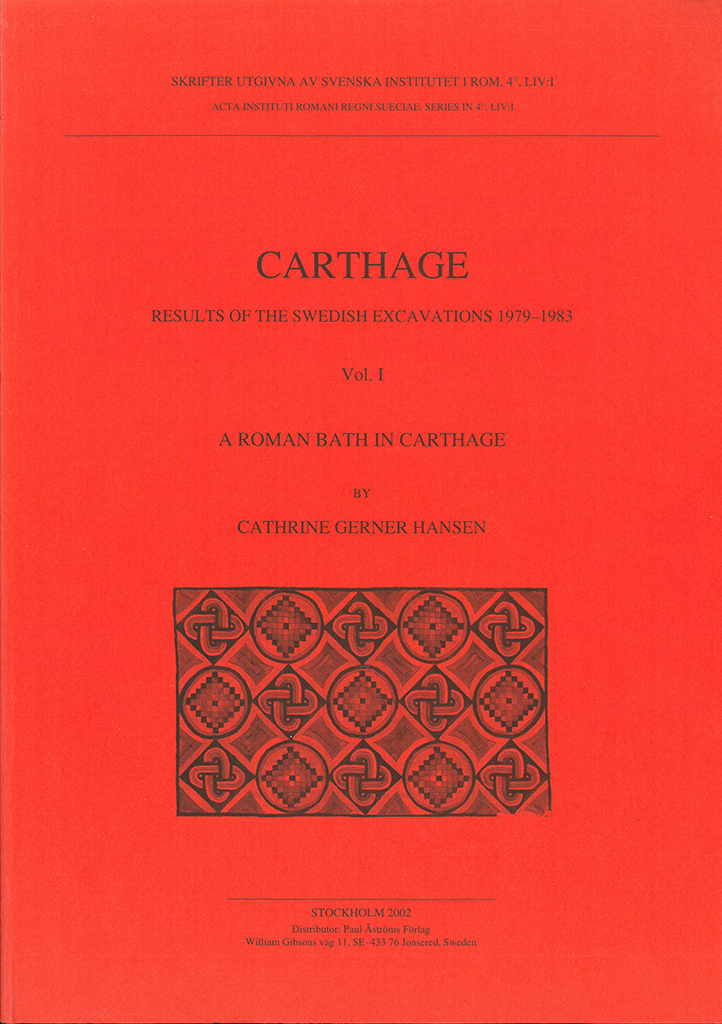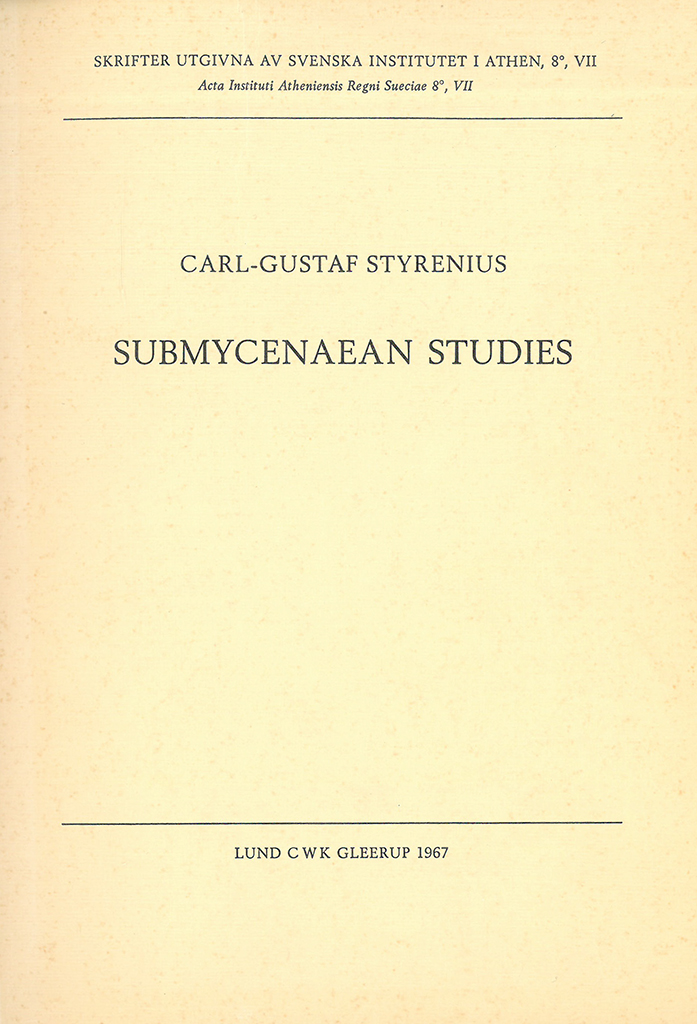Carthage Carthage I. Results of the Swedish excavations 1979–1983. A Roman bath in Carthage Now available for purchase at Astrom Editions, Amazon.com, and Amazon.de. By Cathrine Gerner Hansen. With foreword by Birgitta Sander and Carl-Gustaf Styrenius and contributions by Serge Lancel and Gudrun Anselm This volume contains the architectural descriptions and analyses of the ruin found by the Swedish Mission to Carthage, SMC, during 1979–1980 within the Unesco programme Pour Sauver Carthage. An archaeological report will follow. The main plot, Site A, which was placed at the disposition of the SMC is located at the foot of the northern incline of Byrsa in the triangle between avenue de la Republique (now avenue de I’ Amphitheatre) and rue Mendes France. Since the excavations were established on the highest point of the saddle between the two Carthaginian heights Byrsa and Juno it was entirely unexpected when the remains of a Roman bath complex were revealed. The finds essentially confirm Saumagne’s theories regarding the layout of Roman Carthage. The main and best preserved remains, labelled Complex II, were part of lnsula 101 E making up the corner between the Cardo I E and Decumanus I N. Approximately 620 m2 of the building, hypothetically…
Asine II. Results of the excavations east of the Acropolis 1970–1974 Published by the Swedish Institute at Athens. Distributed by Astrom Editions. Fasc. 1. Søren Dietz 1982, with preface by Carl-Gustaf Styrenius and contributions by J. Lawrence Angel, Anders Hellström and David Reese. General stratigraphic analysis and architectural remains, Stockholm. ISBN 9789185086559 (softcover: 144 pp. + pls.) Fasc. 2. Søren Dietz 1980. The Middle Helladic cemetery, the Middle Helladic and Early Mycenaean deposits, Stockholm. ISBN 9789185086245 (softcover: 144 pp.) Fasc. 3. Barbro Santillo Frizell 1986. The Late and Final Mycenaean periods, Stockholm. ISBN 9789185086931 (softcover: 86 pp.) Fasc. 4. The Protogeometric period Part 1. Berit Wells 1976. The Tombs, Stockholm. ISBN 9789185086115 (softcover: 31 pp.) Part 2. Berit Wells 1983, with an appendix by Birgitta Hulthén and Siv Olsson. An analysis of the settlement, Stockholm. ISBN 9789185086566 (softcover: 148 pp.) Part 3. Berit Wells 1983. Catalogue of pottery and other artefacts, Stockholm. ISBN 9789185086573 (softcover: 297 pp.) Fasc. 5 not yet published. Fasc. 6. The Post-Geometric periods Part 1. Birgitte Rafn 1979. The graves of the early fifth century B.C., Stockholm. ISBN 9789185086238 (softcover: 30 pp.) Part 2. Erik Poulsen 1994. The Post-Geometric settlement material and tombs of the Hellenistic period,…
Published by the Swedish Institute at Athens. Distributed by Astrom Editions. Submycenaean studies. Examination of finds from Mainland Greece with a chapter on Attic Protogeometric graves By Carl-Gustaf Styrenius Preface (excerpt) The main part of the present study will be devoted to an examination of the Submycenaean and Protogeometric graves in Attica, a subject suggested to me by my Professor, Einar Gjerstad. I will try to subdivide the Submycenaean period into several phases on the basis of the development of the pottery and the location of the graves in the Kerameikos. The validity of the subdivisions will be checked by comparing grave forms, burial customs and grave offerings in the different periods. The Protogeometric period will be examined a little more summarily and without any new division into phases. The reason for this is that most of the Protogeometric material from the Athenian Agora is still unpublished, and I will not anticipate the complete study of this subject in the Agora publication. I am most grateful to Mrs E.L. Smiths on for her kindness in allowing me to include all the unpublished Submycenaean and Protogeometric graves from the Agora in my study. In the second part of the book I…


